Should you bird proof your solar panels? While birds perching on your solar panels may initially seem harmless, their droppings, nests, and constant activity can lead to reduced efficiency and potential long-term damage. So, birds seeking shelter or nesting beneath solar panels can pose potential issues, from maintenance concerns to interruptions in energy production. In this article, we’ll navigate the options available to ensure your solar panels operate seamlessly while respecting the natural environment.

Why do birds nest under solar panels
Birds may nest under solar panels for various reasons, and this behaviour has been observed in some regions. Some common reasons are:
- Shelter and Protection: Solar panels provide a sheltered and protected space, shielding birds from the elements such as rain, wind, and predators. In other words, the spaces underneath solar panels mimic natural nesting sites, like tree branches or nooks in rocks.
- Warmth: Solar panels generate heat when exposed to sunlight. So, birds may find the warmth generated by the panels appealing, especially during colder seasons. This can be particularly attractive for birds seeking a comfortable and warm environment for nesting.
- Elevated Position: Solar panels are typically mounted on rooftops or elevated structures. Birds often prefer elevated locations for nesting, as it offers them a better vantage point to monitor their surroundings and potential predators.
- Accessibility: The spaces beneath solar panels can be easily accessible for birds, providing a convenient location for building nests. Also, the panels’ structure may help in protecting nests from ground-based predators.
Will nesting birds come back?
Yes, nesting birds may return to the same location in subsequent breeding seasons. Many bird species exhibit site fidelity, which means they tend to return to the same nesting site year after year. This behaviour is influenced by factors such as the availability of suitable nesting sites, the success of previous breeding attempts, and familiarity with the area.
Besides, if birds have successfully raised chicks under or near a specific location, they may recognize it as a suitable and safe nesting site. However, it’s worth noting that not all bird species exhibit the same level of site fidelity, and the degree to which they return to the same nesting site can vary.
So, this is why we recommend implementing preventive measures before the nesting season begins. These measures may include installing barriers, deterrents, or modifying the environment to discourage nesting in those areas.
On the other hand, you should think about local regulations and ethical considerations when dealing with bird-related issues.
Reasons Why You Should Always Bird-Proof Your Solar Panels
Bird-proofing your solar panels can be important for several reasons:
- Maintenance and Efficiency: Birds nesting under solar panels can bring in nesting materials and debris, which may accumulate over time. So, this can lead to maintenance issues and reduce the efficiency of the solar panels. Also, bird droppings can affect the performance of the panels by blocking sunlight.
- Electrical Hazards: Nesting materials and debris brought in by birds can create electrical hazards. The accumulation of nesting materials may lead to fire risks or damage to electrical components within the solar panel system.
- Damage to Wiring: Birds may peck at or damage wiring, potentially causing short circuits or other electrical problems. This can result in the need for repairs and impact the overall functionality of the solar panel system.
- Costly Repairs: Dealing with the aftermath of bird nesting under solar panels can be costly. Repairing the damage, cleaning debris, and addressing electrical issues can require professional assistance, leading to additional expenses.
- Protecting Birds: While it’s important to discourage nesting in certain areas for practical reasons, it’s also crucial to consider the well-being of the birds. Nesting in areas with electrical components or other potential hazards can pose risks to the birds and their offspring.
- Long-Term Performance: Bird-proofing measures, such as barriers or mesh, can help ensure the long-term performance and durability of your solar panel system. So, by preventing birds from nesting underneath, you can maintain the efficiency of your panels and extend their lifespan.
- Compliance with Regulations: In some areas, there may be regulations or guidelines regarding wildlife protection. Bird-proofing your solar panels helps ensure compliance with such regulations while also addressing potential issues related to bird nesting.
- Preventing Nuisance: Bird droppings and noise associated with nesting activities can be a nuisance. By bird-proofing your solar panels, you can avoid these disturbances and maintain a cleaner and quieter environment.
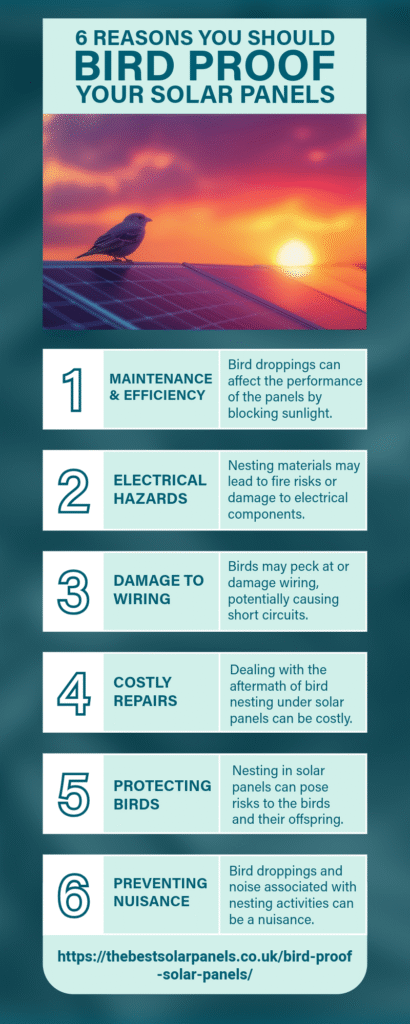
Bird proofing products
Many bird-proofing products are specifically designed for solar panels to prevent birds from nesting underneath or causing damage. Here is a list of bird-proofing products for solar panels:
- Solar Panel Mesh: You can install a specifically designed mesh or netting around the perimeter of solar panels to create a barrier. This prevents birds from accessing the space beneath the panels. Besides, it allows for proper ventilation and does not interfere with the functioning of the panels.
- Bird Spikes: Plastic or metal spikes can be attached to the edges of solar panels, making them uncomfortable for birds to land on. These spikes don’t cause harm but effectively discourage birds from perching.
- Bird Netting: You can use durable netting made of polyethene or nylon to cover the entire area beneath the solar panels. It provides a physical barrier that prevents birds from reaching the space under the panels.
- Electric Bird Deterrents: Some systems deliver a mild electric shock when birds land on protected surfaces. These systems are designed to be safe for birds but effectively deter them from roosting. The electric shock is usually low voltage and doesn’t harm the birds.
- Bird Repellent Gels: Sticky gels can be applied to surfaces around solar panels, creating an uncomfortable landing area for birds. These gels are non-toxic and safe for the environment. So, they make the surface less appealing to birds.
- Ultrasonic Bird Repellers: Devices emitting ultrasonic frequencies that are unpleasant for birds can be installed near solar panels. These frequencies are generally safe for humans but can deter birds from staying in the area.
- Visual Deterrents: You can install reflective tape, discs, or scare balloons with predator-like designs around the solar panel area. The movement and reflections can be effective in deterring birds.
- Predator Decoys: Statues or decoys resembling predators, such as owls or hawks, can be strategically placed to create the illusion of danger, deterring birds from nesting.
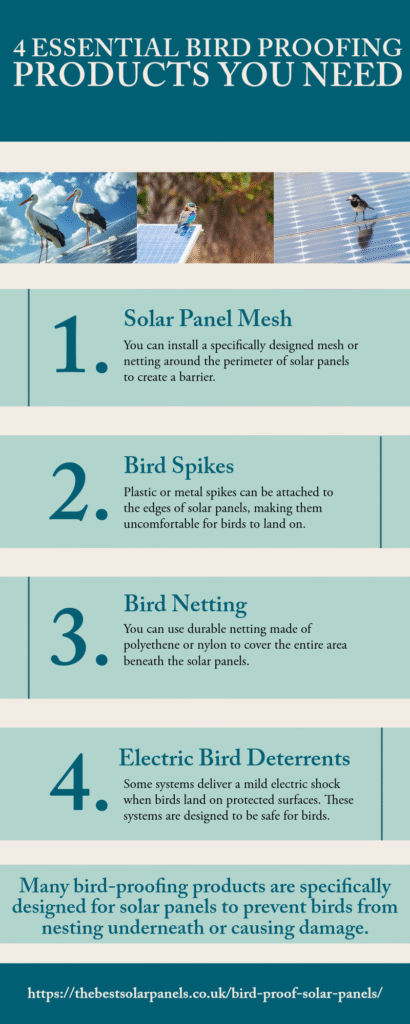
When selecting a bird-proofing product, think of factors such as the local bird species, the specific layout of the solar panel installation, and any potential environmental impact. Additionally, proper installation is crucial to ensure the effectiveness and longevity of the bird-proofing solution.
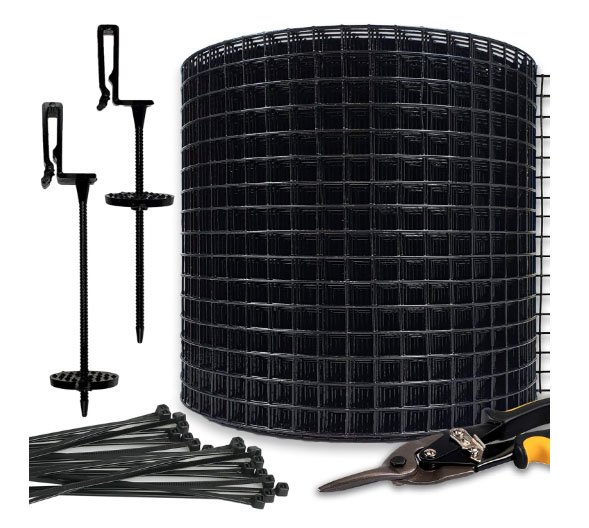
How to choose a bird-proofing product for your solar panels
Choosing a bird-proofing product for your solar panels involves considering various factors to ensure effectiveness, safety, and compliance with local regulations. Here’s a guide on how to choose the right bird-proofing product:
- Identify the Bird Species: Different bird species may require different deterrent methods. So, identify the specific birds causing issues with your solar panels to choose a product that effectively targets their behaviour.
- Understand Local Regulations: Check local regulations and guidelines related to bird control. Some areas have restrictions on certain deterrent methods, especially if they could harm protected bird species.
- Consider Humane Methods: Choose bird-proofing products that are humane and environmentally friendly. Avoid products that could cause harm to birds or other wildlife.
- Assess the Solar Panel Layout: Consider the layout of your solar panel installation. The design and structure may influence the most effective bird-proofing solution. For example, some methods may be more suitable for ground-mounted panels than roof-mounted ones.
- Evaluate the Environment: Take into account the surrounding environment. If your solar panels are located in an urban area, the types of deterrents suitable for that setting might differ from those used in rural or suburban areas.
- Consider Long-Term Effectiveness: Choose a bird-proofing solution with long-term effectiveness. Some products may need regular maintenance or replacements, so factor in the overall cost and effort required for ongoing bird control.
- Assess Aesthetic Impact: Consider the visual impact of bird-proofing products on the aesthetics of your property. Choose solutions that are effective without being overly intrusive.
- Deterrent Compatibility: Ensure that the chosen bird deterrent is compatible with solar panels and won’t interfere with their function. Mesh or netting should allow for proper ventilation, and spikes or gels should not damage the panels.
- Weather Resistance: Select products that are durable and weather-resistant. Solar panels are exposed to various weather conditions, so the bird-proofing solution should withstand environmental elements over time.
- DIY vs. Professional Installation: Consider your comfort level with installation. Some bird-proofing products are suitable for DIY installation, while others may require professional assistance. Professional installation can ensure proper placement and effectiveness.
- Read Reviews and Seek Recommendations: Research and read reviews about different bird-proofing products. Additionally, seek recommendations from professionals or others who have successfully addressed similar bird-related issues.
- Budget Considerations: Evaluate your budget for bird-proofing solutions. Different methods come with varying costs, so choose an option that aligns with your financial constraints.
By carefully considering these factors, you can select a bird-proofing product that suits your specific situation and helps protect your solar panels effectively.
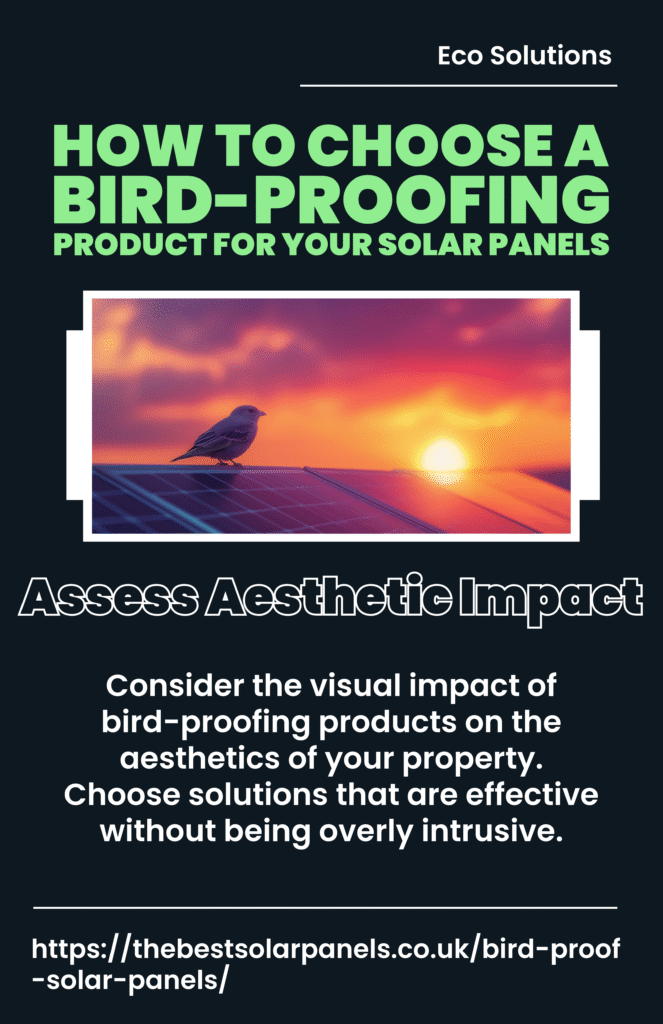
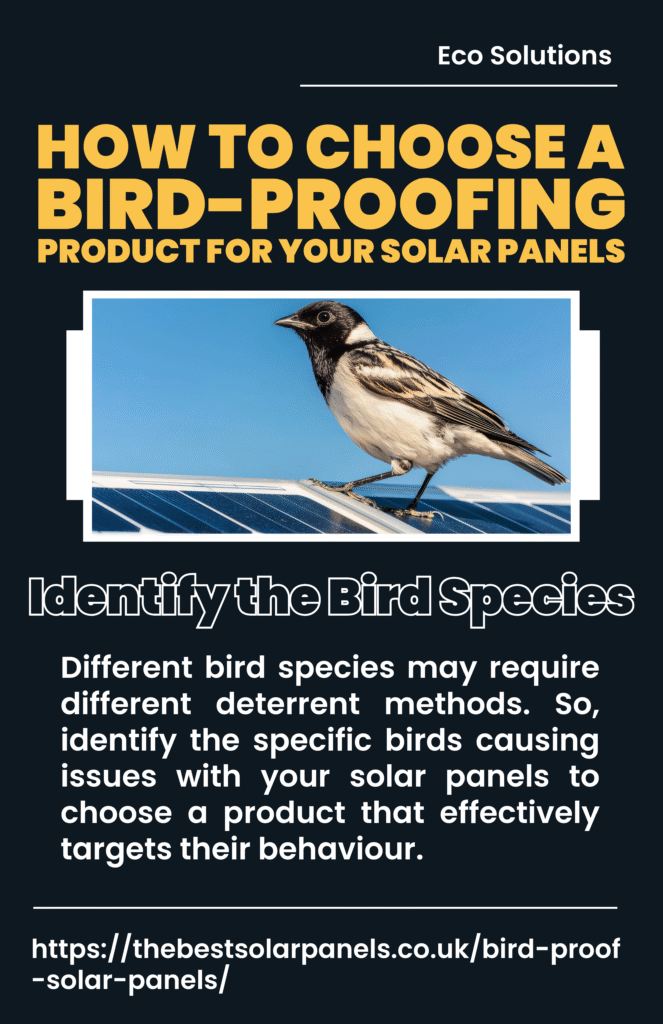
How Much Does it Cost to Bird Proof Solar Panels?
The cost of bird-proofing solar panels in the UK can vary based on several factors, including the chosen bird-proofing method, the size of the solar panel installation, and whether you opt for DIY solutions or professional installation. Here are some general estimates for bird-proofing costs in the UK:
- Solar Panel Mesh or Netting: Mesh or netting in the UK is about £2 to £10 per square meter. The total cost will depend on the size of your solar panel array. The total cost will depend on the size of your solar panel array.
- Bird Spikes: Bird spikes in the UK typically range from £1 to £5 per linear meter. The total cost will depend on the linear footage needed for your solar panels.
- Electric Bird Deterrents: Electric bird deterrent systems are more expensive, ranging from £100 to over £1,000, depending on the system’s complexity and features.
- Bird Repellent Gels: Bird-repellent gels in the UK generally range from £5 to £20 per tube. The number of tubes needed will depend on the size of the area to be treated.
- Ultrasonic Bird Repellers: Ultrasonic bird repellers can cost anywhere from £20 to £100 or more, depending on the brand and features.
- Visual Deterrents and Decoys: Visual deterrents, reflective tape, scare balloons, and predator decoys can vary widely in cost. Prices range from a few pounds for basic options to over £50 for more advanced or realistic decoys.
- Professional Installation: If you choose to hire professionals for installation, labour costs will add to the overall expense. Labour costs can vary depending on location, the complexity of the job, and the chosen bird-proofing method. Professional installation costs may range from a few hundred to over a thousand pounds.
It’s crucial to consider the specific requirements of your solar panel installation and obtain quotes from reputable suppliers or professionals. Additionally, check local regulations and guidelines to ensure compliance with any restrictions related to bird control methods in the UK.
What Do Bird Proofing Services Include?
Bird-proofing services typically involve a range of measures to deter birds from nesting, roosting, or causing damage in specific areas. These services are often provided by professionals who specialize in bird control. Here’s what bird-proofing services may include:
- Site Assessment: Professionals conduct a thorough assessment of the site to identify areas where birds are causing issues. They evaluate the type of bird species involved, the extent of the problem, and potential entry points.
- Identification of Bird Species: Understanding the specific bird species causing issues is crucial for selecting the most effective bird-proofing methods. Different birds may require different deterrent strategies.
- Recommendations and Custom Solutions: Based on the site assessment, professionals provide recommendations tailored to the specific situation. This may include a combination of bird-proofing methods to address different aspects of the problem.
- Installation of Bird-Proofing Products: Professionals install bird-proofing products such as mesh or netting, bird spikes, electric deterrent systems, gels, ultrasonic repellers, visual deterrents, or decoys. The selection depends on the nature of the bird issue and the characteristics of the site.
- Sealing Entry Points: If birds are gaining access to buildings or structures, professionals may identify and seal entry points to prevent birds from entering or nesting in unwanted areas.
- Cleaning and Decontamination: In cases where birds have left droppings or nesting materials, professionals may provide cleaning and decontamination services. Bird droppings can carry diseases and may need to be removed and disinfected safely.
- Maintenance and Follow-Up: Bird-proofing solutions may require ongoing maintenance. Professionals may schedule follow-up visits to ensure the effectiveness of installed deterrents and make any necessary adjustments.
- Humane Solutions: Ethical and humane considerations are often taken into account. Professionals aim to deter birds without causing harm, and they may choose environmentally friendly methods.
- Documentation and Reports: Some bird-proofing services provide documentation, including reports outlining the identified issues, the recommended solutions, and the steps taken to address the problem. This documentation can be useful for future reference.
- Compliance with Regulations: Professionals ensure that the chosen bird-proofing methods comply with local regulations and guidelines. Some birds are protected by law. So, bird-proofing measures must be implemented in a manner that does not harm protected species.
Conclusion
Bird-proofing your solar panels is crucial to maintaining their efficiency and prolonging their lifespan. By implementing humane and effective solutions, you can enjoy the benefits of clean, renewable energy without the unwanted presence of our feathered friends. Investing in bird-proofing measures safeguards your solar panels and contributes to a more sustainable and efficient solar energy system for years to come.

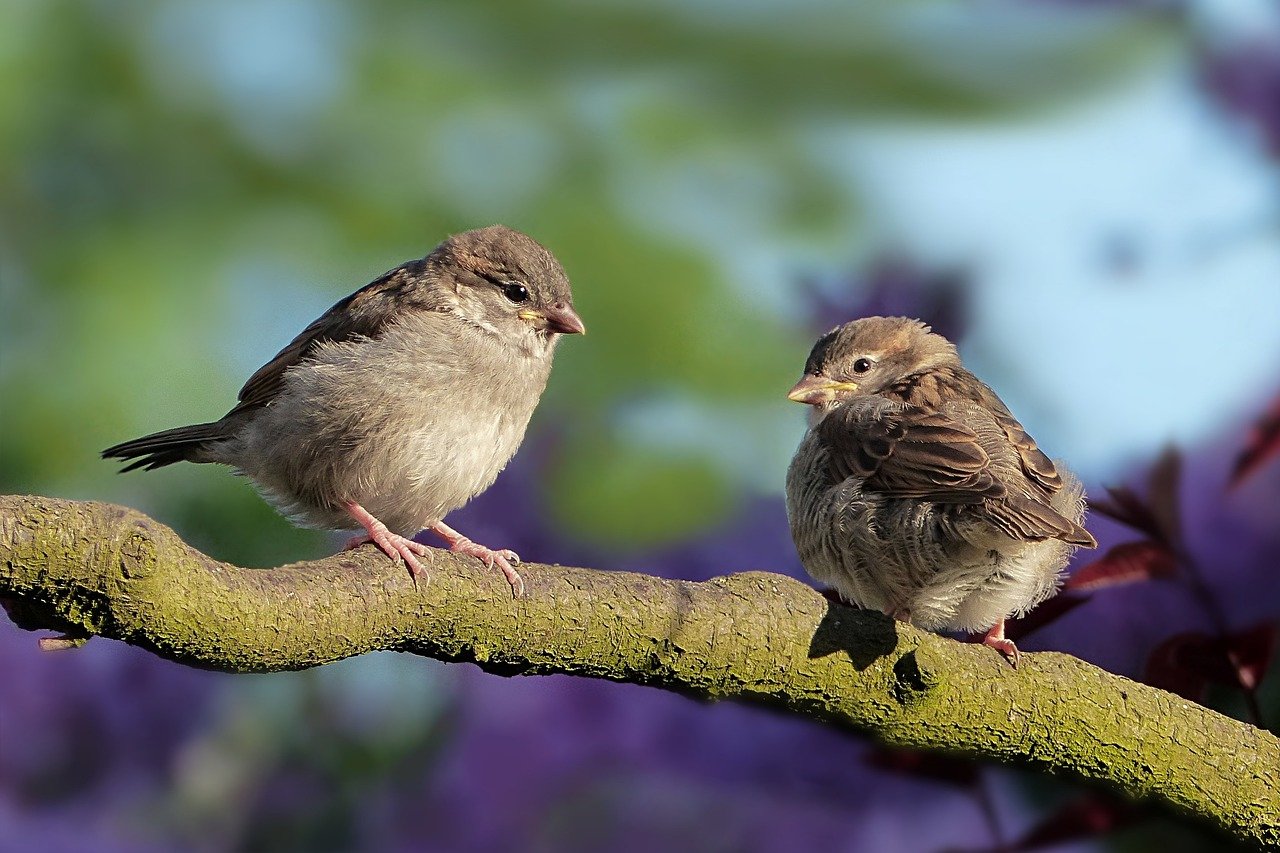


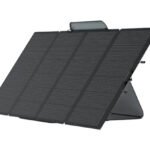
Leave a Reply